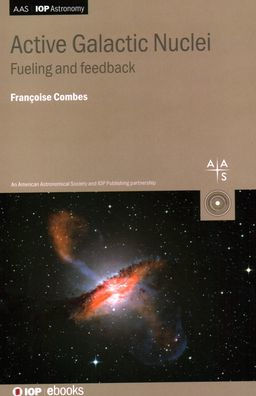Almost all galaxies host in their center a supermassive black hole of mass between a million and tens of billions solar masses. Supermassive black holes grow in symbiosis with their host galaxies across the Hubble time, occasionally accreting surround matter, giving rise to an Active Galactic Nuclei (AGN). This book gives a general review of our current knowledge of AGN, powered by supermassive black holes: how they are fueled by gas (or stars) and what problems are encountered; how can we account for the wide variety of AGN, from Seyfert/Liners to quasars, and for the two types (AGN 1 and 2) either through dust obscuration, and geometrical orientation arguments, or through intrinsic activity difference, qualitative or quantitative. With modern instruments, providing high resolution and sensitivity, like ALMA in radio, or MUSE at the ESO/VLT, it is possible to unveil the interstellar medium and stars in the circumnuclear regions, discover molecular disks and tori, in the sphere of influence of the black holes. While AGN are accreting matter, they are providing so much energy that part of the surrounding gas is expelled and is observed in molecular outflows, identified as the main feedback process of AGN on their host.
Key Features:
- Reviews our current knowledge of AGN, with case studies and examples of observed AGN in their host galaxies.
- Discusses the long-standing problem of AGN fueling and feedback, and proposes educated models of the circum-nuclear regions, which are still difficult to resolve.
- Covers recent advances in the field of AGN research provided by current astronomical instrumentation (e.g., ALMA, VLT).
- Written by a world-leading expert in the field.
Almost all galaxies host in their center a supermassive black hole of mass between a million and tens of billions solar masses. Supermassive black holes grow in symbiosis with their host galaxies across the Hubble time, occasionally accreting surround matter, giving rise to an Active Galactic Nuclei (AGN). This book gives a general review of our current knowledge of AGN, powered by supermassive black holes: how they are fueled by gas (or stars) and what problems are encountered; how can we account for the wide variety of AGN, from Seyfert/Liners to quasars, and for the two types (AGN 1 and 2) either through dust obscuration, and geometrical orientation arguments, or through intrinsic activity difference, qualitative or quantitative. With modern instruments, providing high resolution and sensitivity, like ALMA in radio, or MUSE at the ESO/VLT, it is possible to unveil the interstellar medium and stars in the circumnuclear regions, discover molecular disks and tori, in the sphere of influence of the black holes. While AGN are accreting matter, they are providing so much energy that part of the surrounding gas is expelled and is observed in molecular outflows, identified as the main feedback process of AGN on their host.
Key Features:
- Reviews our current knowledge of AGN, with case studies and examples of observed AGN in their host galaxies.
- Discusses the long-standing problem of AGN fueling and feedback, and proposes educated models of the circum-nuclear regions, which are still difficult to resolve.
- Covers recent advances in the field of AGN research provided by current astronomical instrumentation (e.g., ALMA, VLT).
- Written by a world-leading expert in the field.

Active Galactic Nuclei: Fueling and Feedback
120
Active Galactic Nuclei: Fueling and Feedback
120
Product Details
| ISBN-13: | 9780750330336 |
|---|---|
| Publisher: | Iop Publishing Ltd |
| Publication date: | 03/15/2022 |
| Series: | Programme: AAS-IOP Astronomy |
| Pages: | 120 |
| Product dimensions: | 7.34(w) x 10.52(h) x 0.63(d) |
